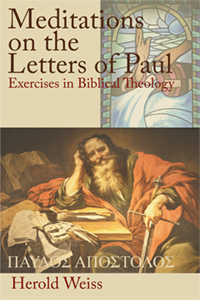Metaphor of Incarnation
It’s unlikely that anyone has failed to notice that I have spent no time thus far in trying to demonstrate that the doctrine of the incarnation is true. I’ve just been playing with its meaning.
In fact, I generally don’t find it appropriate to try to prove a mystery in the first place. Let’s just face the fact that a person who is 100% divine and 100% human doesn’t really make any sense to us as such. Personally, I think that if it does make sense to you, you have a problem. In one sense, the mystery is a metaphor to help us understand the divine presence in the life of Jesus. (If that sentence doesn’t either twist your brains or give you some problems, then perhaps you should read it again. Go ahead! Have problems with it!)
For me, the key to deciding whether a metaphor, mysterious or not, is valuable is in the fruit. Does it help us improve in keeping the two greatest commands (love God and love our neighbors) or not? And in my view the incarnation does help us fulfilled. In the incarnation, God crossed the greatest gap that there could be between any two entities. God is infinite, we are finite. No matter how much you subtract from infinity, infinity is not diminished. God has bridged an infinite gap in coming to dwell with us.
The theological term “kenosis” or “emptying” describes what was happening in the Christmas story. Read Philippians 2:5-11. Jesus gave up everything, becoming a human and accepting human conditions. That means that he had to live as we do. Often we think of Jesus having many special powers and full knowledge of how his life would go, but for him to live like us, to be tested as we are (Hebrews 4:14-16), he needed to work largely with powers that we have. At the same time we call him fully divine. Now that’s a mystery!
Interestingly we celebrate this emptying at the winter solstice, in one sense the low point of the year. We make it a joyful celebration, but at the other end of the two-ended cord, it’s an emptying, an end.
Christians often complain of the association of Christian holidays with pagan ones, and Christmas is a good example. It’s pretty unlikely that Jesus was actually born on December 25, but the celebration certainly fits the event. There’s no dishonor in sharing a theme with paganism. Not all pagan ideas are bad. There’s no reason to believe that every myth from another religious is filled with falsehood. (See http://www.religioustolerance.org/winter_solstice.htm for some information on other winter solstice celebrations.)
Myths, metaphors, and celebrations can be great, and they can help us grow.
